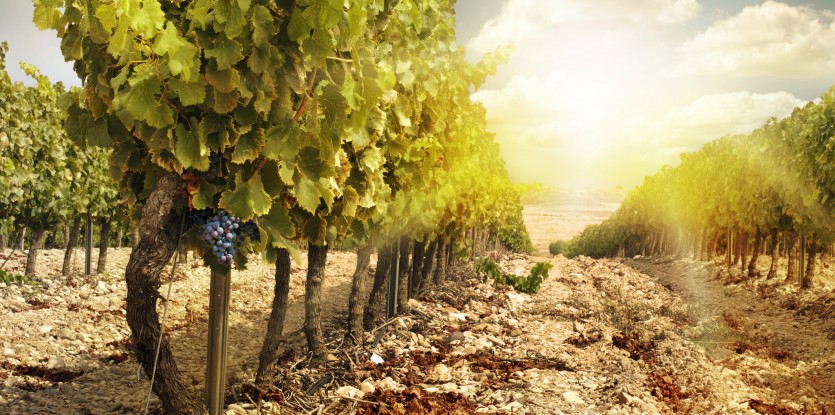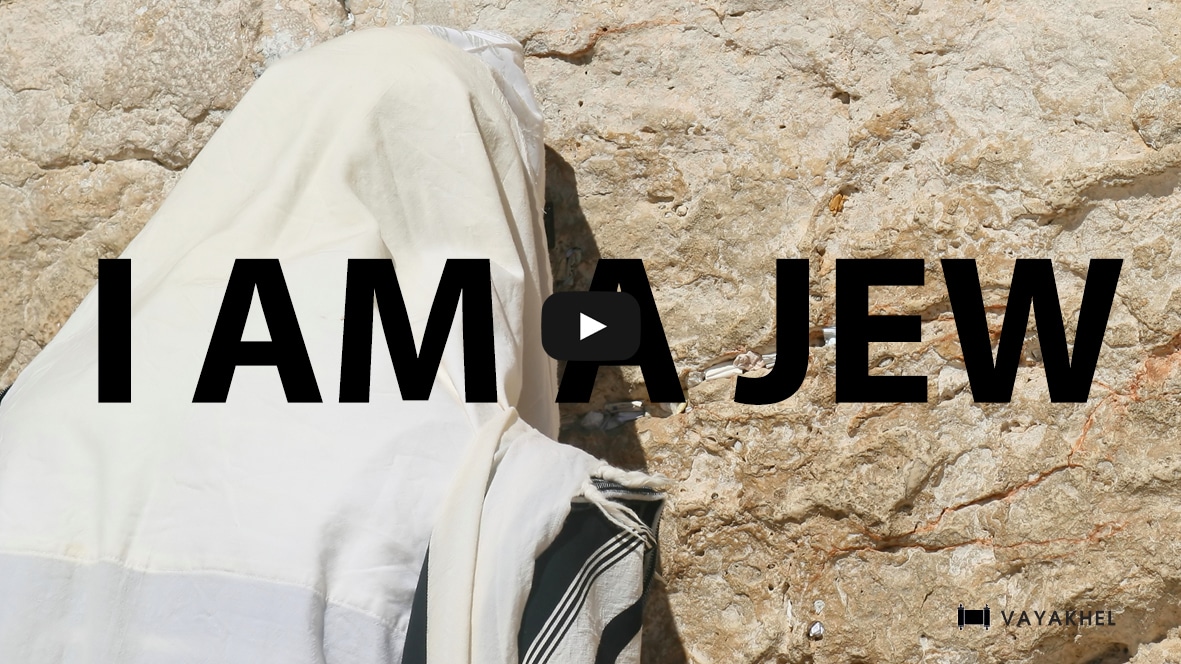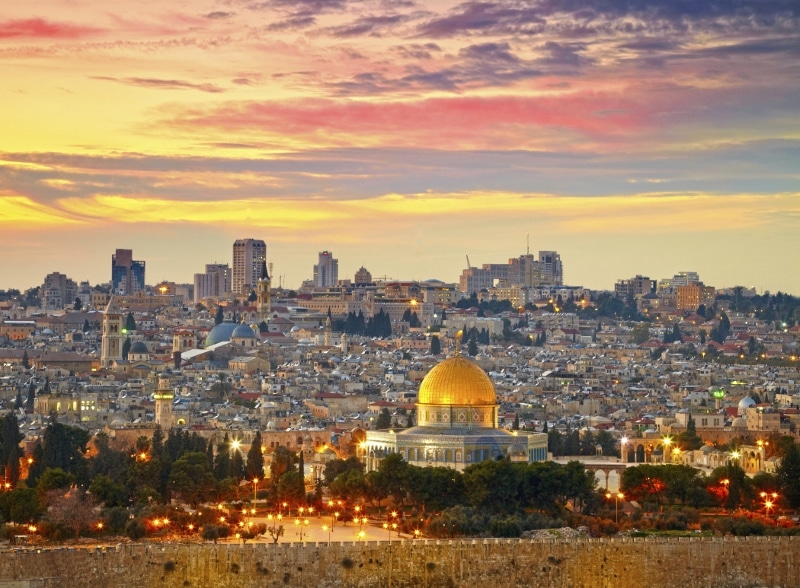On the seventh day of Cheshvan, fifteen days after the conclusion of the festival [of Sukkot], one begins to pray for rain. This is to allow the very last Jew to reach the Euphrates River.
Talmud, Taanit 10a
In many Chassidic communities, it was the custom that at the conclusion of the Tishrei festival season, the gabbai of the synagogue would ascend to the podium, pound on the table and, citing Genesis 32:2, announce: “And Jacob went on his way!”
When the Holy Temple stood in Jerusalem, the festival of Sukkot (Tishrei 15-21) was a time of pilgrimage for all Jews, when all came to “see and be seen” at the Temple,1the seat of G-d’s manifest presence in the physical world. In the days following the festival, the caravans would stream from the holy city and make the long (physically for some, spiritually for all) trek back to plow and pruning hook, back to field, vineyard and orchard. The end of the first week of the month of Cheshvan found the people of Israel once more “each under his grapevine, each under his fig tree.”2
Today, too, Cheshvan marks the end of a period of spiritual focus and a return to the demands of material life. During the month of Elul and the “Days of Awe” that open the month of Tishrei, we occupied ourselves with “repentance, prayer, and charity,” striving to improve our relationships with our Creator and with our fellows. Immediately following came Sukkot, the festival of unity and joy, and Simchat Torah, when we celebrated our unique bond with the Almighty by rejoicing with the Torah. Cheshvan is the month in which we return to our pedestrian involvements after many weeks in which the spiritual was at the forefront of our lives. Indeed, the only “distinguishing feature” of this month is the fact that it is the only month on the Jewish calendar that does not have a single festival or special day.
In truth, however, the month of Cheshvan, by virtue of its ordinariness, represents the very purpose of life on earth. For the Jew does not live only for the spiritual experiences of the festivals, merely “tolerating” the stretches of ordinary days and weeks in between; on the contrary—the holy days which dot our year exist for the sake of the so-called “mundane” days of our lives.
High and Low
“G-d desired a dwelling place in the lower realms.” With these words our sages describe the divine purpose in creation.3
What are the “lower realms”? It is common to refer to the spiritual as “higher” than the material, and to the physical universe as the “lowest” of G-d’s creations. But are these designations truly justified? After all, G-d not only created all spiritual and physical entities but also the very concepts of “spirituality” and “physicality.” He transcends both realms equally and, at the same time, is equally present in both, for His all-embracing truth knows no limit or categorization. So why should the spiritual be deemed loftier than the physical?
To understand why the physical is indeed “lower” than the spiritual, we must first examine the meaning of the term olam, the Hebrew word for “world.” Olam means “concealment.” A “world” is a framework or context within which things exist; and in order for anything to exist, a concealment must first take place.
The reason for this is that the basic (and only) law of existence is that “there is none else besides Him”4 that G-d is the only true existence and that nothing exists outside of His all-pervading reality. In order for anything else to possess even the slightest semblance of somethingness or selfhood, this truth must be veiled and obscured. Hence G-d’s creation of “worlds”—concealments within which things may exist distinct and apart (at least in their own conception) from the all-nullifying reality of G-d.
G-d created both “higher” spiritual creations and “lower” physical ones. The difference between them lies not in their essential closeness to or separateness from G-d, but in the degree of the concealment their “worlds” provide. A lesser concealment may allow for things to “exist,” but these existences will be conscious of their Creator and utterly subservient to Him, acknowledging their total dependence upon Him. In this there are many gradations and degrees—the greater the concealment in any given world, the more of a “self” the creations of that world will possess.
In this sense, the physical world is the lowest world of all. So great is the physical world’s concealment of G-dliness, that the selfhood of its inhabitants is absolute: by nature, the physical object or creature strives only for its own preservation and advancement, regarding its own existence as the axis around which all else revolves. The world of the physical not only dims its divine source but obscures it entirely, even allowing for creations that deny their own origin and essence.
The Dwelling
It is this lowest of worlds that is the focus of G-d’s creation. G-d wished to create an environment in which His reality is almost entirely concealed, an environment so distant from its source in Him that it can even contain “evil”—elements which resist and deny His all-pervading truth, despite the fact that they are utterly dependent upon Him for their vitality and existence. And in this “lowly” realm He desired that we construct for Him a “dwelling”: a place in which He is at home, an environment in which He is openly and uninhibitedly Himself.
So He designed us as material creatures whose very survival demands a great deal of interaction with the physical reality. And He gave us the ability to direct our material lives to serve a G-dly ideal. Every time we use the yield of our field or business to help the needy, every time we utilize our workday involvements as the means by which to carry out the Creator’s will, we are vanquishing the self-centeredness which so dominates the nature of the material world. We are vanquishing the “I am” of the physical, thereby transforming its very essence: instead of being the world that most obscures the reality of G-d, it now becomes a “home” for Him—an environment that expresses and reveals how truly all-pervading His reality is.
Thus, the physical aspects of our existence are the primary vehicle for the fulfillment of our life’s purpose. The spiritual in ourselves and in creation was created only in order to assist us in the realization of this goal—to inspire and direct us in our interactions with the physical. So one who shuns involvement with the material world and pursues only spiritual and transcendent endeavors is abandoning his primary mission in life.
The same applies to the spiritual and material areas of time. The festivals of Tishrei—as all special dates and events of the Jewish calendar—are for the sake of the “Cheshvan” days of our lives. These spiritual days exist in order to supply us with fortitude and direction so that we may make proper and optimal use of the ordinary days of the year—the days in which we interact with the physical reality, each in his own occupation and field of endeavor.
The Trek to the Euphrates
There does seem, however, to be one breach in the ordinariness of Cheshvan: “On the seventh day of Cheshvan,” says the Talmud, “fifteen days after the conclusion of the festival [of Sukkot], one begins to pray for rain. This is to allow the very last Jew to reach the Euphrates River.” (To this day, Jews living in the Land of Israel add the prayer for rain to their daily prayers beginning on the 7th of Cheshvan.5)
But upon closer examination, the “specialty” of this day only further underscores the preeminence of the ordinary in the Jew’s life.
For the duration of the festival of Sukkot, the Jew left his field and field-related concerns behind and came to the Holy Temple in Jerusalem, where the miraculous was the norm and the divine presence was openly perceived. But then began his journey back home—home to his homestead, home to his mission and purpose. For some it was a journey of several hours, for others, of several days, and for the “last Jew” farming his land on the most distant frontier of Jewish settlement in the Land of Israel, it was a fifteen-day journey to the Euphrates. On the 7th of Cheshvan, when every last Jew was home on his own land, the entire community of Israel began to pray for rain, beseeching G-d to bless their efforts to work the earth and the earthiness of the world into an abode for His presence.
On a deeper level, the “last Jew” is the most distant Jew in the spiritual sense—the one whose occupation is the most material of all. Yet all Jews, including those whose missions in life have placed them but a stone’s throw from Jerusalem, cannot pray for rain until the “lowliest” of pilgrims has reached home. For without this last Jew, their work is incomplete; it is he, more than any other, who represents what life is all about.
Based on an address by the Rebbe, Cheshvan 8, 5745 (November 3, 1984)6
Adapted from the teachings of the Lubavitcher Rebbe by Yanki Tauber







